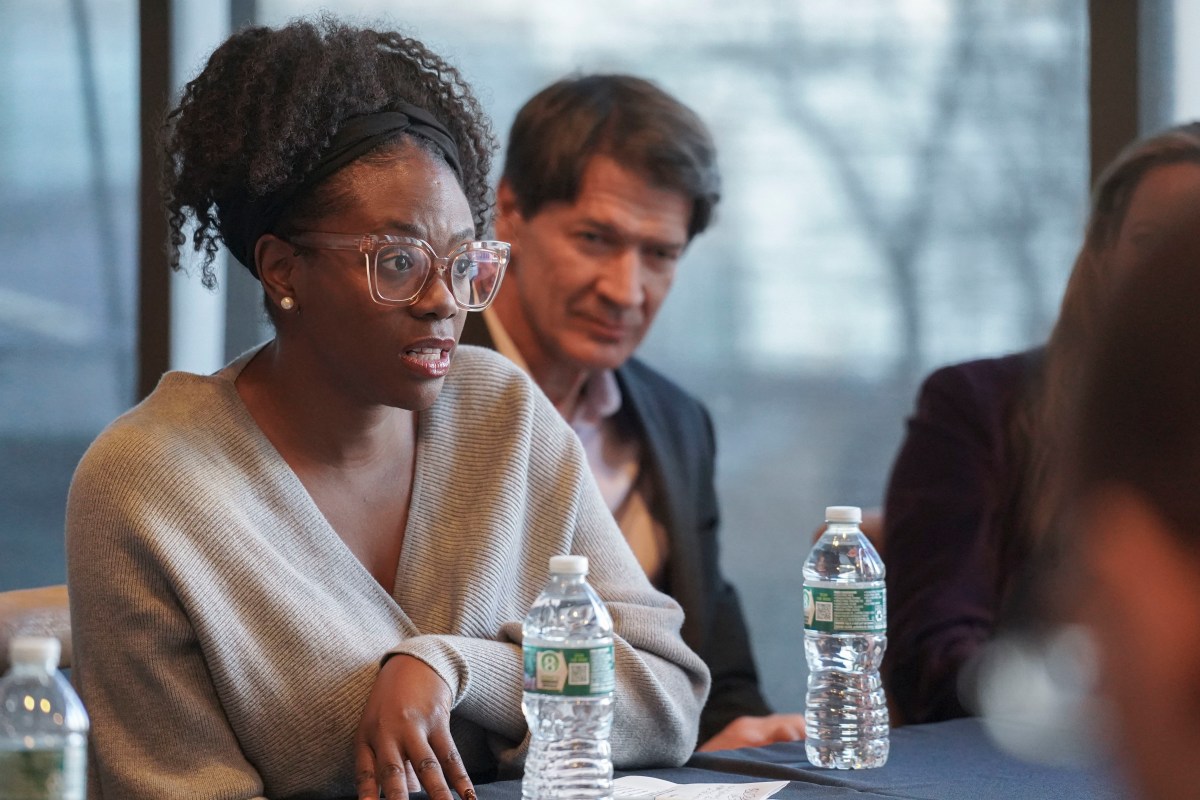By Albert Amateau
With the signing of Arthur Webb as chief operating officer, St. Vincent’s Hospital took another step forward to meet the challenge of building a new 21st-century hospital in Greenwich Village.
Henry J. Amoroso, who became president and chief executive officer of St. Vincent’s in July 2007 as the hospital was emerging from bankruptcy, last week announced Webb’s appointment to the St. Vincent’s leadership team.
“Arthur will help put together a comprehensive operating strategy that will ensure that St. Vincent’s will be ready to serve the community and the city with the healthcare they deserve,” Amoroso said on Monday.
Webb spent nearly 20 years in New York State agencies, including as executive director of the State Health Planning Commission, as commissioner of the State Office of Mental Retardation and Developmental Disabilities, during which he oversaw the restructuring of institutional care, and as chairperson of the New York City regional advisory committee of the Berger Commission.
Moreover, for the past 15 years he has been president and chief executive officer of Village Care of New York, a nonprofit, community healthcare center. With the help of Webb’s guidance, V.C.N.Y. has grown from a $20 million operation to $130 million with two nursing homes, assisted-living and medical services in 15 locations serving 1,800 seniors and people with H.I.V/AIDS.
Beginning Feb. 9, Webb’s expertise will focus on St. Vincent’s proposal to construct a state-of-the-art, 299-foot-tall hospital, replacing its O’Toole Building on the west side of Seventh Ave. To partially pay for that, St. Vincent’s will sell its current main hospital campus — spread over eight buildings on the east side of Seventh Ave. — to the Rudin Organization for residential development.
Over the past year, Webb has publicly spoken up for the hospital project. Last week, in a meeting with The Villager’s editorial staff that included Bernadette Kingham-Bez, St. Vincent’s senior vice president for communications and planning, Webb affirmed his belief in St. Vincent’s 154-year-old tradition and his conviction that a new hospital is necessary to ensure healthcare in the area.
“St. Vincent’s can’t possibly modernize the current plant, and it’s the only hospital on the West Side below 59th St.,” he said. “It’s extremely expensive to build, so the hospital has to maximize its assets, which is exactly what they’re doing by selling a large chunk of the property for development. What they’ve done is take an interesting and creative approach.”
The Landmarks Preservation Com-mission in October approved the demolition of the O’Toole Building and use of the site for the new hospital, but there is still another Landmarks review to come for the design of the hospital, as well as for the design of the residential project across the avenue.
“Our architects are talking with Landmarks staff about architectural elements and the talks have been very productive,” said Kingham-Bez.
In addition to the remaining L.P.C. review, the project must also go through the City Planning Commission and the uniform land use review procedure, or ULURP, which could take nearly a year and would end in a City Council vote. Beyond the city review, the project must, in the end, receive approval from the New York State hospital review board.
Webb said that the proposed new hospital, with its acute-care functions in one building and a ground-floor emergency room, was specifically intended to conform to state standards.
“In the past few years, the hospital emergency room has become the front door to healthcare,” Webb said, noting that in the recent past, 40 percent of acute-care patients came from the emergency room and the percentage is likely to increase to 65 percent. “It didn’t used to be like, and it’s not the best way to organize healthcare, but those are the facts now,” he said.
Responding to a question about the prospects of building an expensive new hospital to be paid for in part by a residential development, Kingham-Bez, said that St. Vincent’s has complete confidences in its partners, the Rudin family.
“When they make a commitment they stick by it,” she said.
The approval process is still in an early stage, she stressed.
“We still have 16 months to two years before the O’Toole Building comes down to make way for the new hospital, and we won’t be in before six years,” she said.
In addition to the new hospital on Seventh Ave., Webb will also be responsible for the smooth running of St. Vincent’s behavioral-health hospital in Westchester, two skilled-nursing facilities in Brooklyn and one on Staten Island and a hospice in Manhattan, as well as clinics in Chinatown and Chelsea.





































